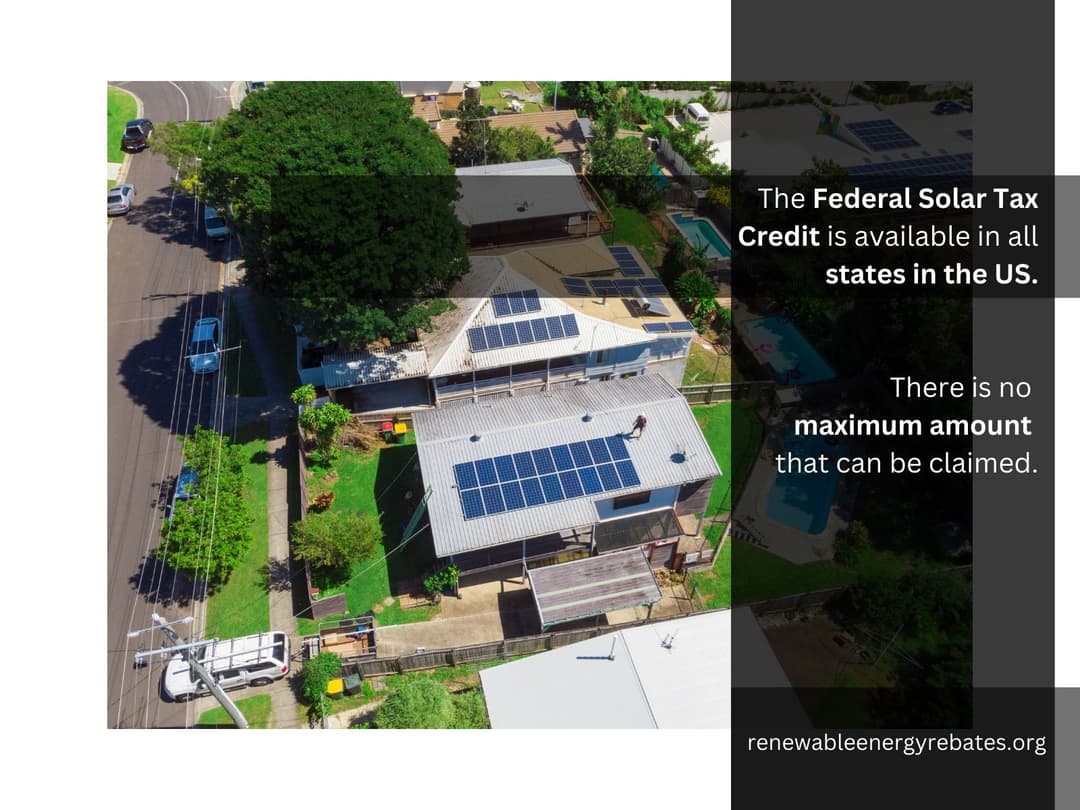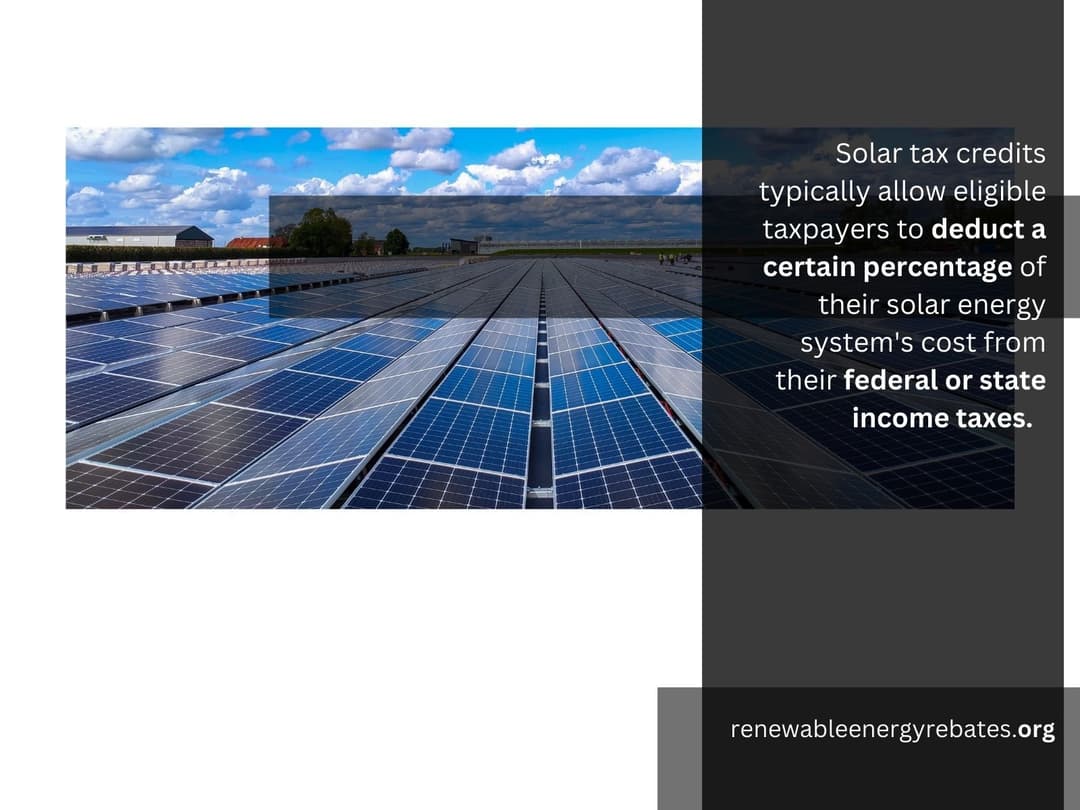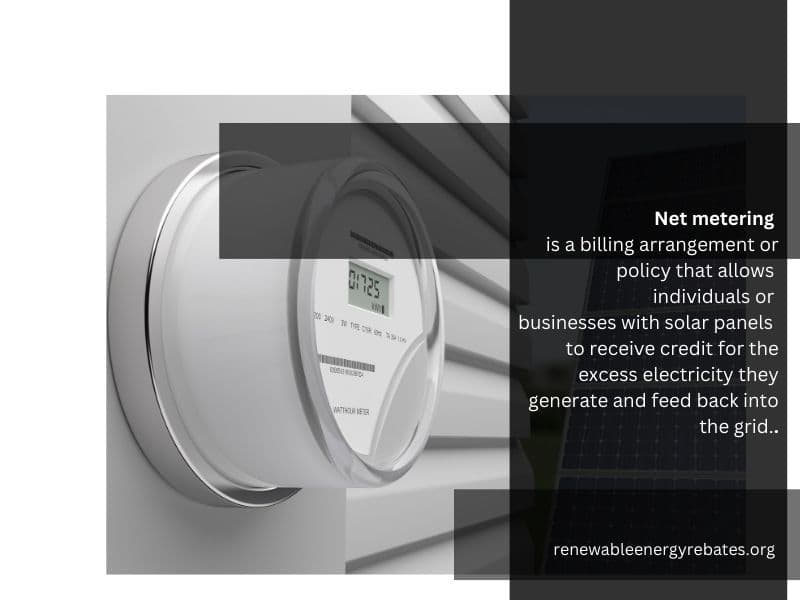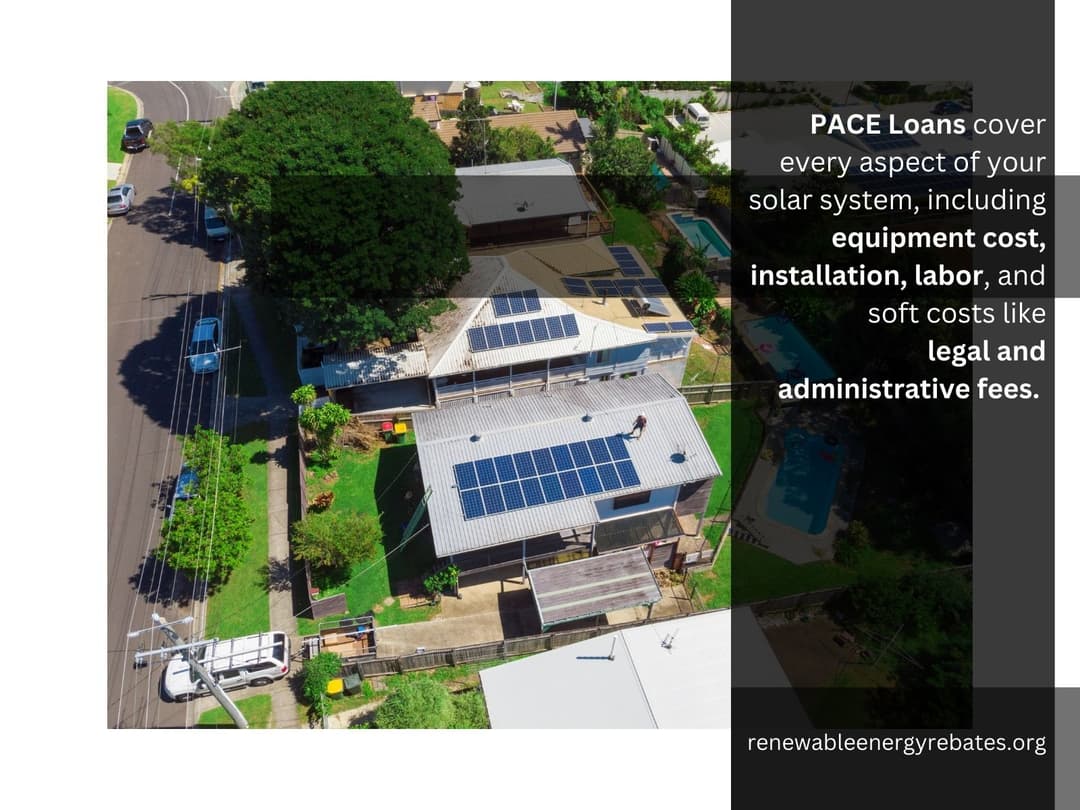Indiana Solar Rebates and Incentives
How Much Can You Save on Solar in Indiana?
Key Details
- Federal Solar Tax Credit is available for residential and commercial properties
- Indiana has no specific sales tax exemption for solar systems/equipment.
- As of 2021, the average retail cost of grid electricity in Indiana was 10.36 cents/kWh
- Average cost of installing a 6kw solar system in Indiana is $15,300
Indiana receives an average of 4,318 sunlight hours each year, making it a good pick for solar installations. As of 2022, about 1.43% of Indiana’s electricity came from solar.
Approximately 1,410.20 MW of solar was installed in the state, enough to power up to 162,934 homes. The state projects that about 7,360 MW of solar will be installed come 2027.

State and Federal Solar Incentives in Indiana
| Indiana Solar Incentives | State or Federal | Program Overview |
| Federal Solar Tax Credit | Federal | Reduces the cost of a person’s solar energy system by a certain percentage. |
| Property Tax Exemption | State | This prevents property owners' taxes from increasing just because their property value increased due to solar projects. |
| Sales Tax Exemption | State | Waives all sales tax on equipment that produces renewable electricity. |
| Net Metering | State | Provides credits to a solar consumer’s utility bills for all excess energy sent to the grid. |
How Affordable is Solar Energy in Indiana?
As of 2021, the average cost of solar panels per watt in the state was $2.49. This price includes equipment and installation services. In comparison, the average retail cost of grid electricity in Indiana was 10.36 cents/kWh.
| State | Number of solar Installations | MW Installed | Average cost for grip power (2021) | Average cost per watts |
| Indiana | 8 | 1,410 | 10.36 cents/kWh | $2.49 |
The average cost of installing a 6kw solar system in Indiana is $15,300. However, residents can take advantage of renewable energy incentives in Indiana to save on solar panel costs. Homeowners can save between 22% and 30% ($3,366 and $4590) on their solar system cost through federal tax credits, depending on the installation year.
| State | Cost of installing a 6kw system | Federal tax credit value 2023 (30%) |
| Indiana | $15,300 | $4590 |
Federal Solar Tax Credit in Indiana
The Federal solar tax credit is a credit given to property owners who purchase solar photovoltaic (PV) systems within a tax year. This credit is available to residential and commercial properties like businesses, non-profit organizations, and local and tribal governments.

Federal solar tax credits for commercial properties are divided into:
The investment tax credit (ITC): It reduces a person’s tax liabilities based on their capital investment in solar projects. It is measured in dollars.
The production tax credit (PTC): Reduces a person’s federal tax income based on the electricity produced by their solar system. It is measured in kilowatt-hours, or kWh.
Federal solar tax credit deductions vary depending on the year of purchase. For instance, solar PV systems installed:
- Between 2020 and 2021 are eligible for a 26% tax credit for residential properties and 26% for ITC for business properties.
- Between** 2022 and 2032** are eligible for a 30% tax credit for residential properties and 30% for ITC; 2.6¢ for PTC for business properties.
- In 2033, systems are eligible for a 26% tax credit for residential properties and 30% for ITC; 2.6¢ for PTC for business properties.
- In 2034, systems are eligible for a 22% tax credit for residential properties and 22.5% for ITC; 2.0¢ for PTC for business properties.
- In 2035, systems are eligible for 15% for ITC; 1.3¢ for PTC tax credit for residential properties.
Regardless of when a solar system was installed, a property owner can claim a federal tax credit that covers the following expenses:
- Solar PV panels cost
- Needed CSP equipment costs
- Sales taxes on solar equipment
- Solar equipment costs like wiring, inverters, and mounting hardware
- Labor costs for solar panel installation, including developer, permitting, and inspection fees.
- The cost of solar storage devices with a capacity rating of 3 and 5 kilowatt-hours (kWh) or greater
- Cost of circuit breakers, step-up transformers, and surge arrestors for commercial properties
- The tax basis can include the interconnection property costs for commercial projects with a capacity rating of 5 MW or less.
Note: The federal solar tax credit for businesses does not cover roof installation costs. However, incremental costs of roof installations may be covered.
Eligibility
Below is the eligibility criteria for a federal solar tax credit:
- The solar system must be located in the United States.
- The solar system must be brand new, but limited previously used equipment is allowed for commercial properties.
- Residential solar systems must be installed between January 1, 2017, and December 31, 2034.
- Commercial solar systems are not leased to a tax-exempt entity. Tax-exempt entities that receive an investment tax credit (ITC) in direct payment are eligible.
- The homeowner must own the solar system or purchase an interest in an off-site community solar project. The solar system must be purchased with cash or through financing but not be leased.
Note: Being eligible for federal solar tax credit should not stop state residents from applying for Indiana tax credit for solar panels. This is because federal incentives do not reduce Indiana solar panel tax credit and vice versa.
How do I claim the Federal Solar Tax Credit in Indiana?
Consider the following steps to claim federal solar tax credit in Indiana:
Step 1. Determine eligibility
The U.S. Department of Energy Solar Energy Technologies Office (SETO) has resources on federal solar tax credits. Individuals can review these resources to check if they are eligible for federal solar tax credits.
Step 2. Fill out the required form
Homeowners must complete and attach IRS Form 5695 to their federal tax returns. In contrast, commercial property owners must attach IRS Form 3468 and 8962 to their tax returns to claim ITC and PTC, respectively. The forms can be downloaded on the Internal Service Revenue (IRS) website.
Step 3. File the necessary IRS form
After filling out the necessary IRS form(s), go to the IRS website to file them. Alternatively, file the forms using third-party tax software.
Step 4. Seek professional advice
Completing the federal solar tax credit form may be challenging. Therefore, speak with a tax expert or a solar provider who can help with the application process. They will ensure the forms are filed correctly.
Net Energy Metering in Indiana
Net energy metering is a billing system that measures the difference between the electricity a resident supplies to a net metering customer and vice versa. Per 170 IAC §4‐4.2-1 (J), only individuals who own and operate renewable energy resources with a capacity of 10kW or less on their premises are eligible for net metering. The energy resource can have a capacity above 10kW at the discretion of the utility company. When a net customer applies for net metering, the utility company will install any of the following meter options on their premises:
- One main watt-hour meter that can measure net kWh.
- Two watt-hour meters that can measure electricity to the customer and the investor-owned electric utility.

The utility company will not charge the customer for facility inspection, request to participate in net metering, and additional metering for single-phase configurations installations.
Solar energy customers can only get credits if the electricity they send to the grid exceeds the electricity supplied by the investor-owned electric utility (170 IAC 4-4.2-7). Per 170 IAC 4-4.2-8, all net metering customers are required to have homeowners, commercial, or other insurance liability coverage of at least $100,000. This ensures the customer is protected against financial losses from using a net metering facility.
Indiana passed a law (SEA309) in 2017 to replace net metering with Excess Distributed Generation Rider (Rider EDG). The rider EDG offers a credit rate that is about 70-80% lower than the 1-to-1 credit net metering provides. However, the following customers will remain eligible for net metering tariff:
- Individuals who installed their renewable energy system by December 31, 2017: These customers will receive net metering credits until July 1, 2032 (IC 8-1-40-13). After the deadline, their excess power will be credited to the Rider EDG.
- Individuals who install net metering facilities before January 1, 2018: They will receive net metering credits until July 1, 2047 (IC 8-1-40-14). After the deadline, excess power will be credited to the Rider EDG.
How to Enroll for Net Energy metering in Indiana
Here is how to enroll for net energy metering in Indiana:
Step 1. Look for a utility company
The Indiana Utility Regulatory Commission (IURC) has a list of utility companies on its website that offers net metering services. Ask for reviews from friends, family, and co-workers with net meters who have worked with any of the companies previously. Check for online reviews on the companies to see what others are saying about them. Settle for the best company based on reviews.
Step 2. Apply for net metering
Net metering application processes vary by the utility company. Generally, individuals can apply for net metering online, by mail, or by email. Application is free for customers whose renewable energy facilities have nameplate capacities of 10 kW or less. However, applications for facilities with nameplate capacities that exceed 10 kilowatts in size cost $50 + $1 per kW.
Step 3. Technical review
A technical review will be conducted to determine the project's impact on the broader electric distribution system. Afterward, the utility company will ask the customer to sign construction and Interconnection Agreement forms.
Step 4. Meter installation
After all agreements have been signed, the customer will be permitted to construct an eligible distributed generation facility. The proof of installation and local building inspection documents should be sent to the utility company. Afterward, a bi-directional meter will be installed by the utility company.
Indiana Property Tax Exemption
Indiana property tax exemption helps taxpayers lower their tax bills by reducing the assessed value they pay on their properties. To be eligible for this exemption, the property owner must:
Own or buy a real property or mobile home under contract, which is not assessed as real property.
The real property or mobile home must be equipped with the following:
- A solar heating or cooling system (IC 6-1.1-12-26)
- Solar devices installed after December 31, 2011 (IC 6-1.1-12-26.1)
- A wind power device (IC 6-1.1-12-29)
- Hydroelectric power device (IC 6-1.1-12-33
- A geothermal device installed after December 31, 1981 (IC 6-1.1-12-34)
Property tax exemption is calculated as:
The assessed value of the property with the renewable energy system/device - the assessed value of the property without the renewable energy system/device = amount of the deduction
To claim property tax exemption, the property owner must complete a Statement for Deduction of Assesses Valuation (Form 18865). This form can be filed by mail or in person at the Auditor’s office in the county where the property is located.
The application form must be completed and dated annually on or before December 31. It must be filed with the County Auditor on or before January 5th of the following year. Individuals do not need to reapply for property tax exemptions annually.
Reapplication only applies during a property sale, change of property title, or the home is refinanced. Per IC 6-1.1-12-35.5, a property owner filing for deductions on a geothermal or hydroelectric system/device must submit a proof certification of qualification issued by the Indiana Department of Environmental Management (IDEM).
Indiana Property-Assessed Clean Energy (PACE) Financing
A property-assessed clean energy (PACE) financing is a type of loan available for commercial and residential property owners. This loan is released towards energy efficiency upgrades and renewable energy improvements on properties. As of 2023, Indiana has not adopted the PACE financing program. However, Senate Bill 411 has been passed to adopt the commercial property assessed clean energy program (C-PACE).

State Sales Tax Exemptions in Indiana
Indiana has no specific sales tax exemption for solar systems/equipment. However, transactions involving machinery, tools, or equipment used to directly produce tangible personal property (including electricity) are exempted from the state gross retail tax (IC 6-2.5-5-4). Therefore, machinery, tools, or equipment used in producing renewable energy for sale could be eligible for this exemption.
The Indiana Department of Revenue (DOR) issued revenue rulings in 2009 and 2014 for wind energy and solar photovoltaics equipment related to the manufacturing exemption. Under the two rulings, some components of the renewable energy systems were exempted from the sales and use tax. Examples of such components are:
- Wind turbines whose foundation, nacelle, tower, generator, gearbox, blades, yaw motors, and related component parts are directly used to produce electricity for sale.
- Solar PV arrays whose modules, racking, and inverters are directly used to produce electricity for sale.
Equipment used in producing renewable electricity is presumed to be subject to sales tax exemption. As such, a person who qualifies for the manufacturing exemption can submit an Indiana General Sales Tax Exemption Certificate (Form ST-105) to the seller. Note that renewable energy properties used for producing electricity for residential use are not included in the manufacturing exemption, regardless of if all or part of the electricity generated at the residence is sent to the grid. This is because the generated electricity is not for sale.
Indiana Household Profile
The United States Census Bureau reported that Indiana had a resident population of over 6.8 million in 2022. However, as of 2021, there are over 2.9 million housing units in Indiana, with 69.9% of that number owner-occupied and 30.1% available for rent.
Between 2017 and 2021, these owner-occupied housing units had a median value of about $158,500. In contrast, the median gross rent was $89. In 2021, there were over 2.6 million households in the state, with 2.50 persons per household. That same year, local Building Departments in Indiana issued about 29,860 building permits.
As of 2020, Indiana's total energy consumption per capita was approximately 377.9 Million Btu. Out of this total, about 75.8 Million Btu of energy was consumed by residential properties. In contrast, commercial properties consumed about 49.7 Million Btu of energy.
Renewable Energy in Indiana
According to the U.S. Energy Information Administration (EIA), in 2021 10% of Indiana's total electricity net generation came from renewable sources. These renewable sources (wind, solar, biomass, and hydroelectric power) produced nearly 4,400 megawatts of energy.
The largest percentage (8%) of renewable energy generation came from wind. Indiana’s wind project started in 2008 with about 130 megawatts of capacity. This project grew so much that in 2022, the state had wind turbines with a capacity of over 3,450 megawatts.
Renewable energy sources like solar, biomass, and hydroelectric facilities generated small amounts of electricity in 2021. Only 1% of electricity was generated from solar. Nearly three-fourths of this electricity came from utility-scale facilities.
Others came from small-scale (less than 1 megawatt) solar installations like rooftop solar panels. The remaining 1% of Indiana's renewable-sourced net generation came from biomass and hydroelectric power. The biomass power came from landfill gas, animal waste, and municipal solid waste.
Two wood pellet plants in Indiana produce nearly 7,000 tons of pellets yearly via woody biomass. These pellets can be used for electricity generation and space heating. Indiana has only five utility-scale hydroelectric facilities. The largest hydroelectric plant, which produces about 54 megawatts, is located at the Ohio River at Indiana's southeastern boundary.
Indiana also has corn and soybean crops that can be used to provide feedstock for biofuel production. The state is the sixth-largest producer of fuel ethanol in the United States. In 2020, nearly 1 billion gallons of fuel ethanol were produced in Indiana.
This accounted for about 7% of the total fuel ethanol produced in the country. That same year, about 2.4 million barrels of biodiesel were produced in Indiana. In 2011, Indiana’s legislature created a voluntary clean energy portfolio standard to allow electric utility companies to acquire 10% of the electricity they sell from clean energy sources by 2025.